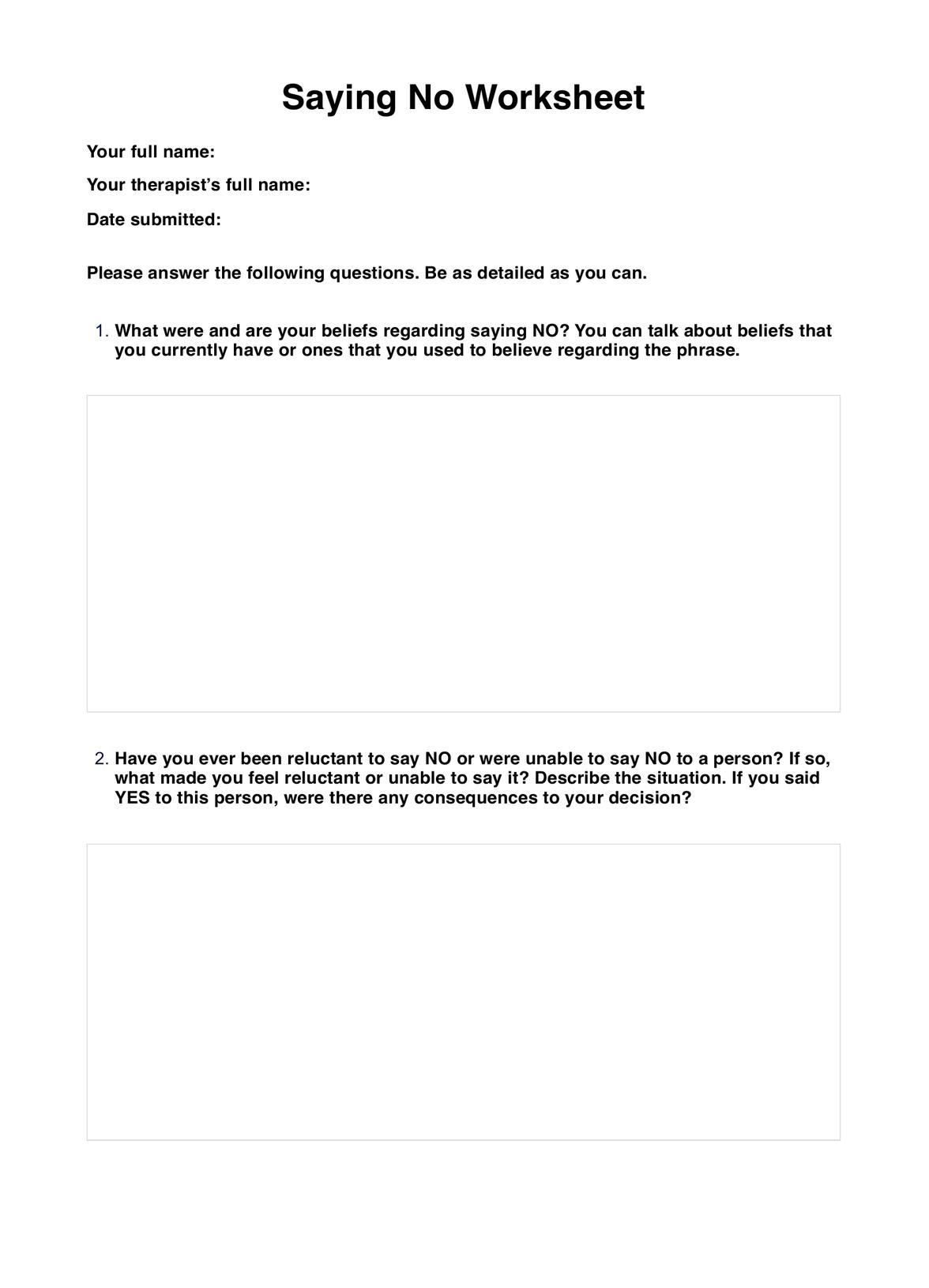Here are examples of unhelpful beliefs about saying NO:
- Saying NO is upsetting and hurtful
- Saying NO is selfish
- Saying NO is rude
- Saying NO is unkind and uncaring

Teach your DBT patient to set boundaries and steel themselves from peer pressure and have them apply their learnings with our Saying No Worksheet PDF.
Here are examples of unhelpful beliefs about saying NO:
People often find it difficult to say NO because they fear what people might think of them after saying it. They also feel like others won't be able to accept NO for an answer and fear they won't be able to cope.
Some people have a hard time saying NO because the benefits of saying YES outweigh saying NO, even if it's to their detriment.
Yes. If you're saying NO to friends or family, communicate why you said NO so they understand. Healthy relationships are supposed to acknowledge and respect personal space and boundaries.
EHR and practice management software
*No credit card required
Free
$0/usd
Unlimited clients
Telehealth
1GB of storage
Client portal text
Automated billing and online payments